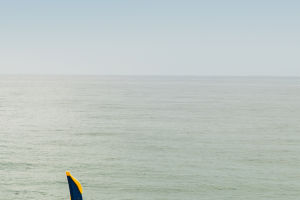Whether it is the architectural elements, the surrounding landscape, or the engineering marvels, bridges offer a variety of angles and perspectives for photographers. Here are some tips to take stunning bridge photographs:
1. Research and scout the location: Before setting out to take bridge photographs, do some research about the bridge, its history, and the surrounding area. Scouting the location will help you find the best angles, viewpoints, and lighting conditions.
2. Use a tripod: A tripod is essential for landscape and bridge photography. It allows you to stabilize your camera and get sharp images, even in low light conditions. It also helps you to take long exposure shots, which can create a beautiful effect on the water and the surroundings.
3. Consider the lighting conditions: The lighting conditions can make or break your bridge photographs. Early morning or late afternoon light can create beautiful warm tones and soft shadows. On the other hand, harsh mid-day light can create strong shadows and blow out the highlights. Be aware of the light and choose the best time to capture your shots.
4. Experiment with different angles: Bridges offer a variety of angles to explore. Try to shoot from different viewpoints, such as the side, the top, or underneath the bridge. This will give you a variety of perspectives to work with and help you capture unique shots.
5. Include people or objects in the shot: Including people or objects in your bridge photographs can add scale and depth to your images. You can also use them to create interesting compositions, leading lines, or framing elements.
Landscape Photography:
Landscape photography is a popular genre of photography that captures the beauty of the natural world. Here are some tips to improve your landscape photography skills:
1. Plan ahead: Before heading out to shoot, plan ahead by researching the location, the weather, and the lighting conditions. This will help you to choose the best time and place to capture your shots.
2. Use a tripod: A tripod is essential for landscape photography as it allows you to stabilize your camera and get sharp images. It also enables you to take long exposure shots, which can create beautiful effects on waterfalls, rivers, and seascapes.
3. Pay attention to the light: Light is the most crucial element in landscape photography. Try to shoot during the golden hour, which is the hour after sunrise and the hour before sunset. This is when the light is soft and warm, creating beautiful tones and shadows. Alternatively, you can shoot during the blue hour, which is the time just before sunrise or just after sunset when the sky is deep blue.
4. Use leading lines: Leading lines are elements that lead the viewer's eye into the image. They can be anything from roads, paths, or rivers that lead into the distance. Including leading lines in your composition can add depth and interest to your images.
5. Experiment with different lenses: Different lenses can offer different perspectives and effects in landscape photography. Wide-angle lenses can capture a vast scene, while telephoto lenses can compress the distance and create a unique perspective. Experiment with different lenses to find the best fit for your composition.
Bridge and landscape photography requires a combination of technical and creative skills. Planning ahead, scouting the location, and paying attention to the lighting conditions are crucial elements for both genres. Using a tripod and experimenting with different angles and lenses can help you capture unique and stunning images.
Remember to have fun and be creative while exploring the beauty of our natural and man-made landscapes.


